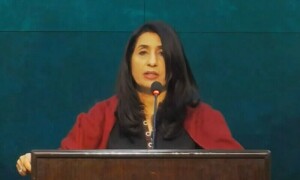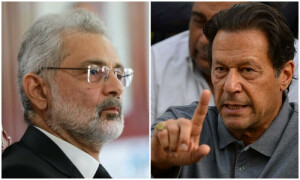UNTIL a few years ago, it was the norm to attribute judicial failure to a powerful executive that stuffed the higher judiciary with its favourites, overriding a judicial ‘consultee’ who remained ‘overwhelmed, overawed or ignored’. But now despite the creation of a collegiate body under Article 175-A of the Constitution, it is the chief justice of Pakistan who, as the paterfamilias, exercises considerable influence when it comes to the selection of the higher judiciary, thanks to a raft of Supreme Court judgements particularly in the Al-Jehad Trust and Sindh High Court Bar Association cases.
People are, therefore, justified in expecting that, since the judiciary is much freer now than before, the judges are being appointed strictly in accordance with the law, the Constitution and the yardstick set by the Supreme Court itself — “people of excellent character, superior calibre and meritorious record having deep insight and profound knowledge”. People can also be excused if they think that by now the higher judiciary would have shown marked improvement in terms of productive capacity, quality of judgments and personal conduct in comparison to the period under dictatorial and quasi-democratic regimes.
So, has the judiciary really met public expectations on both counts — selection and performance of judges? There are three ways to attempt an answer.
Has the judiciary met public expectations on the selection and performance of judges?
First, compare the existing pattern of selecting judges of higher courts with the one when the judiciary was not ‘independent’. Ironically, one would find that the ‘nursery’ from which the judges were produced continues to be the same. Judges still come from four sources: chambers of judges of the high courts or Supreme Court, firms of ‘eminent’ lawyers; provincial bar associations’ office bearers, present or previous; and the district judiciary. It is rare to see an ‘ordinary’ but meritorious lawyer being selected. And it is not just a moral question, but one that goes to the heart of the egalitarian democratic polity that our Constitution envisages, inter alia, under Article 25.
Second, assess the performance of judges. Modern states are founded on a delicate system of checks and balances. Moreover, institutions also have their internal monitoring and audit systems, in addition to being perennially exposed to public scrutiny. But there is no provision in the law for the public scrutiny of judges, and thankfully so, given the sanctity and insular nature of their profession. Indeed, Article 68 further protects the conduct of judges from being called into question even in parliament. Only the Supreme Judicial Council, a constitutional body which is composed of the senior-most judges and headed by the chief justice, can examine the ‘capacity’ or ‘conduct’ of a high court or Supreme Court judge. But strangely, the Council has yet to be effectively activated. Thus, barring some judicial strictures occasionally passed by the Supreme Court against an ‘erring’ judge, there is no effective mechanism for judges’ accountability.
Finally, evaluate the performance of the judiciary as an institution. No doubt, the judiciary has jealously guarded its independence vis-à-vis the executive. But basic questions continue to hang over it: does its ‘independence’ reflect the corresponding impact on its performance? Does it satisfy the common man’s desire to access cheap and speedy justice a few notches higher than before? From the public pronouncements of the senior judges themselves, it is not difficult to discern dissatisfaction with the judiciary’s overall performance. Perhaps seven years — since the judiciary stepped out of the executive’s shadows — is not long enough to turn around a huge institution; yet surely it is sufficient to set in motion an irreversible process leading to meaningful reforms.
Then there are issues that bear on propriety rather than the law. One relates to a conflicting situation when a young lawyer is seen practising in the court that is presided over by his father or a close relative. At times, the situation turns quite embarrassing when the young lawyer ‘supersedes’ his seniors in a high-profile case, due to the kinship factor. True, the law does not prohibit the relatives of judges from practising in the same court; nor do their lordships decide cases swayed by a lawyer’s pedigree or clout. But a question of propriety does arise for the bench and bar, particularly when such practice approaches extreme levels.
After all, ‘it is not sufficient that justice be done; it must be seen to be done’. And this truism hits home in a situation when a litigant loses the case to one of these ‘much sought-after’ lawyers. Moreover, in somewhat similar situations, politicians and bureaucrats are universally decried for nepotism and favouritism, and even hauled up under NAB and other laws, if even an indirect nexus is discovered with their relatives or associates.
Another matter that touches on propriety pertains to the appointment of judges from among the lawyers who have recently enrolled themselves in the local/provincial bar. True, the Constitution allows citizens to live or work anywhere in Pakistan. Particularly, Sindh has embraced people of varied ethnic and religious backgrounds. But the convention is that local lawyers are preferred over outsiders. For one, their character and competence are better known to the bar and bench. For another, it is in sync with the spirit of federalism and legitimate expectations of local lawyers.
The country is passing through testing times and, as the Supreme Court has observed, the “multidimensional challenges ... could be best addressed only through measures and methods where societal and collective considerations are the moving and driving force”. Therefore, it is time the judiciary’s hard-earned freedom mirrored its performance, both in qualitative and quantitative terms. It is time the people received results from this ‘new judiciary’. And it is time the judiciary appointed our lordships to higher benches strictly on merit so that other institutions follow suit. But the question is whether this will happen, and if so, when?
The writer is a lawyer and academic.
Published in Dawn, June 4th, 2016













































